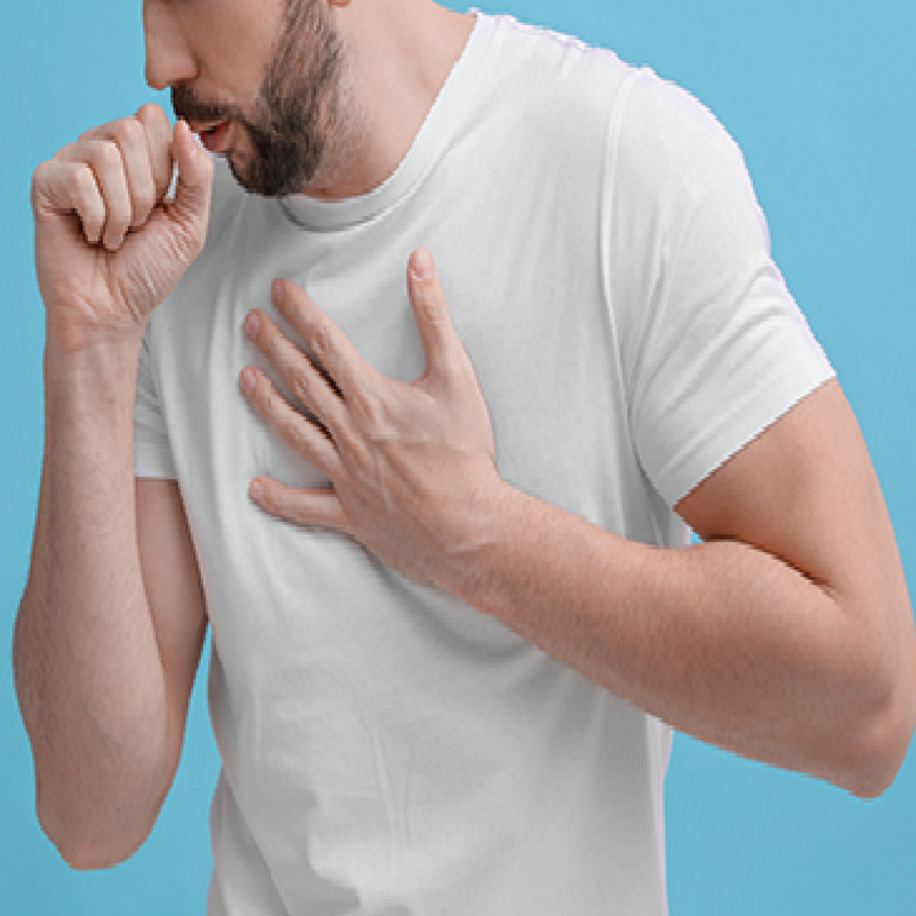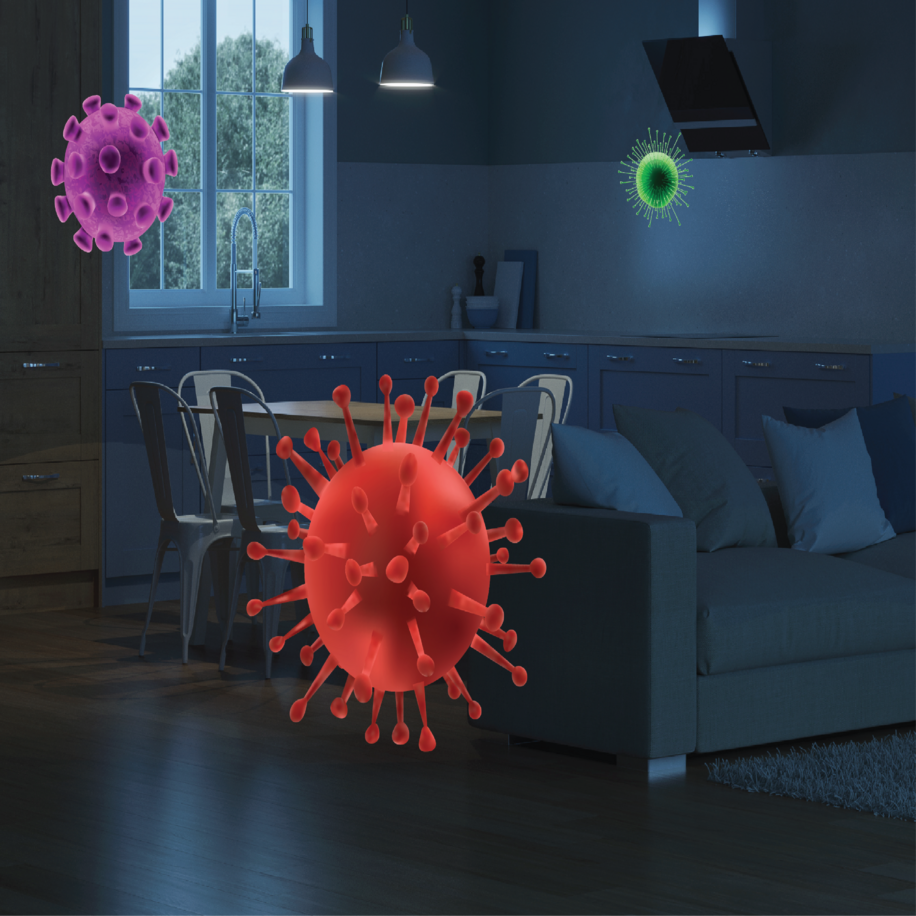PM2.5 Knows No Borders and Is
Now a Major Concern Worldwide
Table of Contents:
What is PM2.5?
PM2.5 is a type of air pollutant that is a particulate matter with a diameter of 2.5 micrometres or less. These particles are small enough to be inhaled deeply into the lungs and are considered to be a major contributor to air pollution and its negative health effects.
PM2.5 can come from the combustion of motor vehicles, power plants, industrial processes, and wildfires. It can also be formed through chemical reactions between other pollutants in the atmosphere, such as sulphur dioxide and nitrogen oxides.
The levels of PM2.5 is changing worldwide

The levels of PM2.5 in the atmosphere are constantly changing and are influenced by a variety of factors, such as weather patterns, industrial activity, and transportation emissions.
In recent years, there has been a growing concern about the impact of PM2.5 on public health, particularly in densely populated urban areas. The levels of PM2.5 have been observed to vary widely across different regions of the world, with some areas experiencing high concentrations of the pollutant due to factors such as forest fires or heavy industry.
As a result, many countries have implemented measures to monitor and reduce PM2.5 levels, such as implementing stricter air quality regulations and promoting the use of cleaner technologies1.
Despite these efforts, PM2.5 remains a significant environmental health concern, and continued monitoring and mitigation efforts will be necessary to protect public health.
Air Quality Index

So, how do we determine whether the air we breathe is polluted or not? This can be measured using the Air Quality Index (AQI). The AQI is a tool that measures the quality of outdoor air and provides information about its potential effects on human health. It is a composite of several pollutants, including ozone, particulate matter, and carbon monoxide, which are known to affect air quality.
The AQI is measured on a scale of 0 to 500, with higher numbers indicating poorer air quality.
When the AQI is in the range of 0 to 50, the air quality is considered good, while values in the range of 151 to 200 are considered unhealthy for sensitive groups, and values above 300 are considered hazardous for all individuals.
The AQI is used by government agencies, such as the United States Environmental Protection Agency (EPA), to communicate air quality information to the public and to make decisions about environmental regulations.
In addition, many cities and regions around the world have established their own air quality monitoring programs and use the AQI as a tool to track air quality trends and identify potential health risks2.
Least and most polluted cities in the world
The list of least3 and most4 polluted cities in the world can vary depending on the source and methodology used to measure air quality. Here are a few examples based on recent reports:
Least Polluted Cities:
1. Zürich, Switzerland
2. Perth, Australia
3. Richards Bay, South Africa
4. Hobart, Australia
5. Reykjavík, Iceland
Most Polluted Cities:
1. Lahore, Pakistan
2. Hotan, China
3. Bhiwadi, India
4. Delhi, India
5. Peshawar, Pakistan.
Air quality can fluctuate over time and can vary depending on factors such as weather patterns and industrial activity, so the rankings on this list may change over time.
Additionally, there are many cities that do not have comprehensive air quality monitoring programs, so their pollution levels may be difficult to assess.
Seasonal patterns of PM2.5
PM2.5 levels can show seasonal patterns that are influenced by various factors such as weather conditions, human activities, and geographical location.
In some regions, PM2.5 levels tend to be higher during the winter months due to factors such as increased heating demand and stagnant air conditions that can trap pollutants close to the ground. For example, in northern China, PM2.5 levels tend to be higher in the winter5 due to increased use of coal-fired heating and weather conditions that can exacerbate air pollution.
In other regions, PM2.5 levels can be higher during the summer months due to factors such as increased traffic and industrial activity6, as well as higher temperatures that can promote the formation of ozone7, a secondary pollutant that can worsen respiratory issues. For example, in many urban areas, summer ozone levels can be higher than in the winter due to factors such as increased traffic and sunlight intensity.
How does PM2.5 affect human health?

PM2.5 can have significant adverse effects on human health. When inhaled, these tiny particles can penetrate deep into the lungs and even enter the bloodstream, leading to a wide range of health problems.
Exposure to PM2.5 has been linked to respiratory and cardiovascular problems, including asthma, chronic obstructive pulmonary disease (COPD), heart disease, stroke, and lung cancer8. In addition, exposure to PM2.5 can aggravate pre-existing health conditions, such as allergies, and can even lead to premature death in some cases.
The health effects of PM2.5 can be particularly severe for vulnerable populations, such as children, the elderly, and individuals with pre-existing respiratory or cardiovascular conditions.
PM2.5 rating that indicates poor air quality
PM2.5 rating above 55 μg/m3 indicates poor air quality.9
The Air Quality Index (AQI) uses a scale from 0 to 500 to measure air quality, with higher numbers indicating poorer air quality.
When the PM2.5 concentration exceeds 55 μg/m3, the AQI is likely to be in the range of 151 to 200, which is considered "unhealthy" for sensitive groups such as children, the elderly, and individuals with pre-existing respiratory or cardiovascular conditions.
When the PM2.5 concentration is higher than this, the AQI can be in the range of 201 to 300 or even above 300, which is considered "unhealthy" or "hazardous" for all individuals.
Air quality standards and guidelines can vary depending on the country and region, and different organisations may have slightly different thresholds for "poor" air quality.
Poor air quality leads to health problems
Poor air quality can have significant adverse effects on human health.
As previously mentioned, exposure to high levels of air pollution such as PM2.5 can cause a wide range of respiratory and cardiovascular problems, worsens pre-existing health conditions, and in rare cases, leads to premature death.
The health impacts of air pollution can be particularly severe for vulnerable populations, such as children who are exposed to high levels of air pollution and may experience slower lung development and a higher risk of developing asthma later in life. Similarly, individuals with pre-existing respiratory or cardiovascular conditions may experience worsening of their symptoms or increased risk of heart attack or stroke.
Short-term exposure: Health effects and illnesses
Short-term exposure to poor air quality, including high levels of PM2.5, can lead to a variety of health effects and illnesses. These can include:
1. Respiratory symptoms.
2. Exacerbation of asthma and COPD.
3. Cardiovascular effects.
4. Reduced lung function.
5. Fatigue and headaches.
Long-term exposure: Health effects and illnesses
Long-term exposure to poor air quality, including high levels of PM2.5, could cause:
1. Cardiovascular disease.
2. Respiratory disease.
3. Cancer.
4. Cognitive decline.
5. Premature death.
How to reduce the levels of PM2.5?
Reducing the levels of PM2.5 requires effort from all parties. Whether it’s the governments, organisations, or individuals, each plays an important role to lower the overall rating of PM2.5.
Government policies to tackle air pollution
The power that policy-makers hold can greatly affect the world; hence several policies have already been implemented to reduce the levels of PM2.5, which are tiny particles in the air that can be harmful to human health. A few actions that have been taken include:
1. Regulations on industrial emissions.
2. Restrictions on transportation emissions.
3. Promotion of renewable energy.
4. Forest conservation and restoration.
5. Public awareness campaigns.
However, policies alone aren’t enough to address air pollution – individual efforts are also necessary.
What can be done at home to enjoy better air?
Air pollution can happen outdoors and indoors. PM2.5 can easily seep into your home from outside, causing the air you breathe indoors to be polluted too. To combat this problem, there are some things you can do at home to reduce your exposure to PM2.5 and contribute to better air quality:
1. Use an air purifier.
2. Keep windows closed.
3. Avoid smoking.
4. Use natural cleaning products.
5. Avoid burning candles and incense.
6. Monitor air quality.
By taking these steps, you can help to protect your health and contribute to improving air quality in your community.

nanoe™ X breaks down hazardous substances found in PM2.510
nanoe™ X is a technology developed by Panasonic that is designed to inhibit hazardous substances and purify the air. According to Panasonic, nanoe™ X uses water molecules in the air to generate highly reactive hydroxyl radicals (OH) that can inhibit certain pollutants and allergens, breaking down airborne particles such as PM2.5. With nanoe™ X, test results have shown more than 99% efficiency in the inhibition of benzoic acid and hexadecane – two hazardous substances found in PM2.5.
However, it is important to note that the effectiveness of the nanoe™ X technology may vary depending on factors such as the level of air pollution in the environment, the size of the space being treated, and the usage. The nanoe™ X technology may not be effective at removing all types of pollutants, and it should not be relied upon as the sole method of air purification.
Overall, while the nanoe™ X technology may be a useful addition to an air purification system, it should be used in conjunction with other filtration methods, such as HEPA filters or activated carbon filters, for maximum effectiveness. Learn more here.
1 https://www.who.int/news-room/fact-sheets/detail/ambient-(outdoor)-air-quality-and-health
2 https://www.iqair.com/world-most-polluted-cities/world-air-quality-report-2021-en.pdf
3 https://smartairfilters.com/en/blog/25-least-polluted-cities-in-world-2023-rankings/
4 https://www.cnbc.com/2023/03/17/most-polluted-cities-and-countries-in-the-world-according-to-iqair.html
5 https://www.sciencedirect.com/science/article/abs/pii/S0167629619311257
6 https://www.sciencedirect.com/science/article/abs/pii/S026974911831296X
7 https://www.ncbi.nlm.nih.gov/pmc/articles/PMC9564865
8 https://www.ncbi.nlm.nih.gov/pmc/articles/PMC4740163/
9 https://www.indoorairhygiene.org/pm2-5-explained/
10 https://www.panasonic.com/global/hvac/nanoe/all/how-nanoe-works/pm25.html








